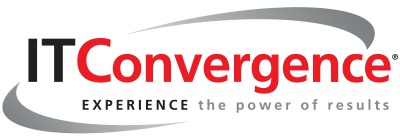For decades, global trade operated within relatively stable frameworks. But 2024–2025 shattered that norm. The ripple effects of the April 2025 tariff emergency, combined with the suspension of 125% reciprocal tariffs, have pushed finance leaders to reevaluate how they plan, budget, and project risk. Traditional annual budgeting simply cannot keep pace with the geopolitical shifts reshaping supply chains in real time.
According to Gartner’s 2025 CFO Benchmarking Report, 82% of CFOs report moderate to high exposure to trade policy disruptions, yet only 29% feel confident in their current forecasting models. This gap is creating massive uncertainty, often resulting in stalled decisions or inefficient reactivity.
That’s why modern CFOs are embracing dynamic scenario planning, building 3 to 5 forecasting models that reflect variable tariff outcomes across sourcing locations, commodities, and customer segments. This includes:
- Rolling forecasts that update quarterly or even monthly.
- Stress-testing models that account for best-case, worst-case, and base-case tariff scenarios.
- Integrating real-time customs data and third-party trade analytics tools into ERP and FP&A systems.
In short, today’s finance function must operate with agility. As Gartner notes, the new playbook centers on financial resilience, where scenario planning becomes a competitive advantage, not just a compliance formality.
Organizations ahead of the curve are also aligning their trade compliance strategy with margin preservation, identifying which SKUs, contracts, or geographies are most exposed and acting accordingly. This level of visibility enables smarter decisions on pricing, product substitution, sourcing location, and even customer prioritization.
Companies that treat tariff forecasting as a dynamic, collaborative process, rather than a static spreadsheet exercise, will be the ones that preserve value and agility when volatility strikes again.
Schedule a Strategy Session
Why Single-Sourcing Is No Longer Strategically Defensible
The days of relying on a single low-cost supplier or geographic region are over. Recent tariff shocks, including the sudden U.S. reversal on 125% reciprocal duties, have exposed a clear truth: supply chain concentration equals enterprise risk.
In a recent report on tariff volatility, Gartner emphasizes that more than 60% of global companies are actively restructuring their supplier networks to avoid overexposure to a single country. Trade tensions between the U.S. and China, alongside similar flashpoints in Brazil, India, and the EU, have catalyzed a shift from efficiency-first models to resilience-first design.
Here’s what that looks like in practice:
- Multi-shoring strategies that combine onshore, nearshore, and offshore capabilities.
- A shift toward “China +1” models—maintaining Chinese manufacturing while onboarding at least one secondary location (like Mexico, Vietnam, or Poland).
- Digital twin modeling to simulate how sourcing changes affect lead times, tariff loads, and landed costs.
- Building inventory buffers closer to end markets for high-risk or high-margin products.
This isn’t just about avoiding penalties or retroactive tariffs. It’s about preserving business continuity when policies shift without warning. For instance, U.S. importers of HTSUS 9903.01.25 goods, impacted by the pause on reciprocal duties, found themselves scrambling to adjust landed cost structures and mitigate retroactive liabilities.
Forward-thinking organizations are also embedding trade risk indicators into their supply chain control towers, allowing them to pivot routes, vendors, and timelines proactively—not reactively.
In a 2024 EY global operations survey, executives said they are accelerating diversification efforts after realizing that efficiency without resilience is a false economy. And more than half of them see nearshoring in LATAM as a key lever to mitigate volatility while retaining access to skilled labor and regional trade agreements.
In this new era of complexity, supply chains must be designed for disruption, and that starts with strategic redundancy.
Why Spreadsheets and Email Chains Can’t Handle Today’s Tariff Complexity
When tariffs shift overnight, speed and accuracy are everything. Yet too many enterprises still rely on siloed processes, outdated spreadsheets, and email threads to track duties, classify goods, and make critical sourcing decisions. In a world where penalties for misclassification or overpayment can reach millions, that’s no longer sustainable.
Gartner’s 2025 “Tariff Volatility Handbook” makes a clear recommendation: invest in centralized trade management platforms that offer end-to-end visibility across classification, documentation, valuation, and compliance. These systems help companies:
- Avoid redundant duty payments and access preferential tariffs through automated FTAs and origin validation.
- Respond faster to geopolitical changes by updating cost models and landed price simulations in real time.
- Automate HTS classification, reducing human error and expediting customs clearance.
- Integrate trade compliance with ERP, logistics, and procurement workflows.
One standout is Oracle Global Trade Management (GTM) Cloud, which empowers organizations to manage the full lifecycle of global trade compliance from a single interface. With GTM, companies can link real-time tariff data with product catalogs, automate license and permit validations, and proactively calculate the impact of duty changes.
The result? Smarter sourcing, leaner operations, and stronger audit trails.
In fact, a recent analysis showed that organizations using centralized global trade platforms reported a strong decrease in compliance costs and a substantial reduction in customs delays.
And this is about more than saving money, it’s about freeing your teams to focus on trade compliance strategy instead of spreadsheets. When tariff intelligence becomes a strategic asset, shared across tax, finance, supply chain, and legal functions, organizations can move faster, with more confidence, in an unpredictable trade environment.
Making Trade Compliance Strategy A C-Suite Topic
In the past, trade compliance was often tucked away under logistics or finance. In Gartner’s 2025 “Tariff Volatility Handbook,” analysts urge CFOs, CIOs, and COOs to recognize the direct link between tariff management and enterprise performance. It’s not just about preventing penalties; it’s about managing margin erosion, making smarter sourcing decisions, and protecting competitive advantage in real time.
When compliance is siloed, companies risk:
- Making costly decisions based on outdated duty rates or FTAs.
- Failing to claim available drawback or exemption programs.
- Missing strategic opportunities in sourcing or restructuring SKUs.
In contrast, companies that treat their trade compliance strategy as a risk management initiative, with input from tax, legal, procurement, and IT, are better equipped to model outcomes, simulate scenarios, and pre-empt supply chain shocks.
What does this look like in practice? Smart organizations are standing up trade governance committees led by the CFO or Chief Risk Officer. They’re embedding tariff forecasting into financial planning cycles. They’re integrating trade data into digital twin simulations to test various sourcing and pricing strategies.
This kind of executive alignment transforms compliance from a reactive function to a strategic weapon.
Why Smart Supply Chains Are Regionalizing
Tariff shocks, geopolitical instability, and regulatory fragmentation are accelerating the shift toward nearshoring and onshoring, not just for cost efficiency, but for resilience and predictability.
According to Gartner’s 2024 Global Supply Chain Trends, global enterprises are actively regionalizing parts of their supply chain to offset tariff exposure and reduce time-to-market. The same study notes that companies adopting nearshore models see a strong reduction in landed cost volatility.
Here’s why nearshore strategies are gaining traction:
- Tariff Minimization: Sourcing from FTA-aligned regions or tariff-exempt countries can protect margins.
- Faster Turnarounds: Reducing lead times means more agility in pricing and production shifts when tariffs change.
- Regulatory Agility: Operating closer to end markets often means fewer unknowns, fewer layers of documentation, and faster customs processing.
- Enhanced Collaboration: Proximity fosters real-time coordination between manufacturers, suppliers, and compliance teams.
For U.S. enterprises, LATAM has emerged as a high-potential nearshore hub. Countries like Mexico, Argentina, and Brazil offer:
- Skilled IT and engineering talent
- Time zone alignment with U.S. teams
- Access to USMCA and other favorable trade frameworks
Companies that embrace regional diversification, not just in sourcing but in workforce models, can build built-in tariff resilience while gaining operational flexibility. This isn’t about abandoning globalization; it’s about de-risking it.
Predict, Don’t Panic: The Role of Tech in Tariff Agility
For too long, trade compliance has been reactive, scrambling after the fact to mitigate cost overruns or customs delays. But with the increasing pace and unpredictability of tariff changes, this approach is no longer sustainable. Modern enterprises are embracing technology-driven trade intelligence that lets them forecast, simulate, and respond to tariff events before they hit the bottom line.
Gartner’s 2024 Tariff Volatility Handbook stresses that organizations leveraging AI-powered trade management platforms are 2.7x more likely to respond to global tariff changes within one week. That agility creates measurable financial impact—especially when tariffs can swing double digits overnight.
What modern platforms enable:
- Scenario Modeling: Run cost simulations by country, HTS code, or incoterm to see the impact of tariff hikes before they go live.
- Dynamic Classification Updates: Use ML models to stay current with changing Harmonized System (HS) codes and CBP rulings.
- Automated Country-of-Origin Validation: Avoid costly audits by ensuring real-time compliance with rules of origin and trade agreement thresholds.
- Duty Recovery Optimization: Identify drawback and refund opportunities instantly with integrated duty deferral logic.
The use of advanced solutions like Oracle Global Trade Management Cloud allows for centralized visibility into global compliance and tariff exposure, with automation capabilities to adjust sourcing, update landed cost calculations, and trigger alerts across finance and operations.

Turn Tariff Chaos Into Strategic Clarity
Tariffs will continue to ebb and flow with political tides, but your ability to adapt shouldn’t. Organizations that rely solely on reactive compliance measures will face mounting cost pressures, regulatory scrutiny, and lost competitive ground.
By adopting a proactive, enterprise-wide trade compliance strategy, backed by automation, integrated data, and modern trade platforms, companies can transform global volatility into a source of operational strength. And it’s already happening.
At IT Convergence, we help clients connect the dots between tariff compliance, supply chain resilience, and digital transformation. Whether it’s leveraging Oracle GTM Cloud for automated classification, aligning finance and procurement with live trade data, or developing tailored playbooks for future tariff events, we ensure that tariff management becomes a strategic enabler, not an obstacle.
Explore ITC’s Trade Compliance Services
Disclaimer:
The information presented in this blog is for educational and informational purposes only. IT Convergence is a technology and ERP systems advisory firm. While we closely monitor the tax, trade, and tariff volatility landscape, we focus on helping organizations prepare their Oracle environments accordingly. We do not provide tax or legal advice, nor do we interpret tax legislation.
We recommend that all organizations consult with qualified tax or legal advisors to assess their specific obligations based on industry, entity classification, and jurisdiction.
IT Convergence supports customers in configuring, optimizing, and future-proofing their systems for compliance but does not assume responsibility for legal or fiscal determinations.




